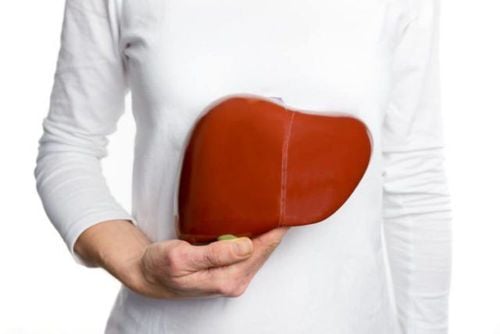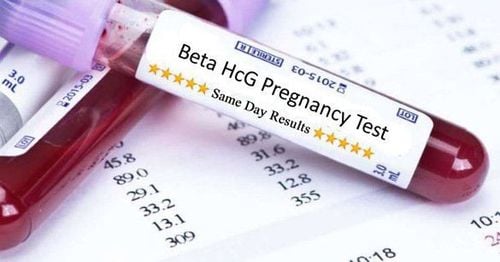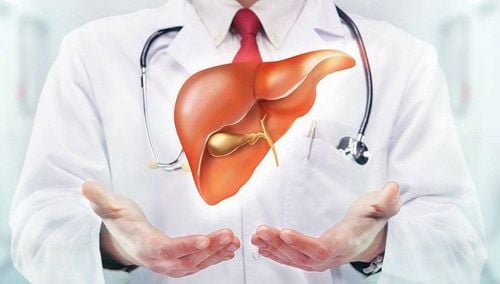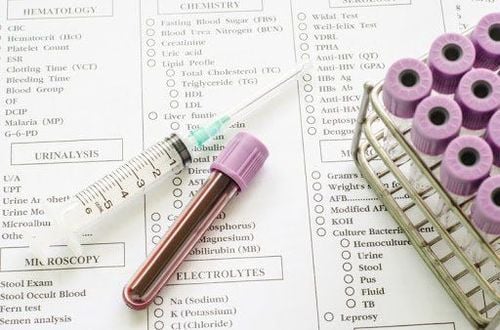This is an automatically translated article.
The article was written by Doctor of Laboratory Department - Vinmec Da Nang International General Hospital.Every year, nearly 1 million people die from diseases related to HBV infection such as cirrhosis, liver cancer. HBV is the second leading carcinogen after smoking. HBV is also responsible for 60-80% of primary liver cancer cases and 50% of cirrhosis cases. Therefore, hepatitis B is still an important cause of death.
1. Symptoms and progression of hepatitis B
Hepatitis B is currently a major global health problem. Chronic hepatitis B is the leading cause of liver failure, cirrhosis, and liver cancer. According to the World Health Organization (WHO), around 400 million people worldwide have chronic hepatitis B, of which 75% are Asians.... Vietnam is one of the countries with the highest HBV infection rate in the world, accounting for about 15%-20% of the population, or about 10-14 million people with hepatitis manifestations. B acute and chronic.

2. Common symptoms of hepatitis B
Hepatitis B has two forms:
Acute hepatitis B : the persistence of the virus in the patient's body within 6 months of exposure to the virus:
70% of patients can no symptoms or no jaundice. 30% have jaundice, with symptoms such as fatigue, weakness, low-grade fever, headache, nausea, loss of appetite. Right lower quadrant pain due to enlarged liver. Jaundice appears after 3-7 days, with increasing jaundice, dark urine, possibly discolored stools. 0.1% - 0.5% of patients have fulminant hepatitis with altered consciousness, cerebral edema. Blood clotting disorder. Multi-organ failure, ARDS, hepatorenal syndrome, arrhythmia, metabolic acidosis, infection, gastrointestinal bleeding, ascites, generalized edema. With 60% of patients dying Recovery phase: After 4-8 weeks from the first symptom. Jaundice subsides after 2-4 weeks. Chronic hepatitis B: disease caused by chronic HBV infection lasting more than 6 months.
Clinical symptoms are usually asymptomatic or only have non-specific symptoms such as fatigue, joint pain... Stage of cirrhosis with symptoms such as: signs of angiosarcoma, jaundice, edema, ecchymosis skin... or portal hypertension (splenic circulation, splenomegaly, ascites, esophageal varices...), the stage of liver cancer caused by HBV may not pass the cirrhosis stage.
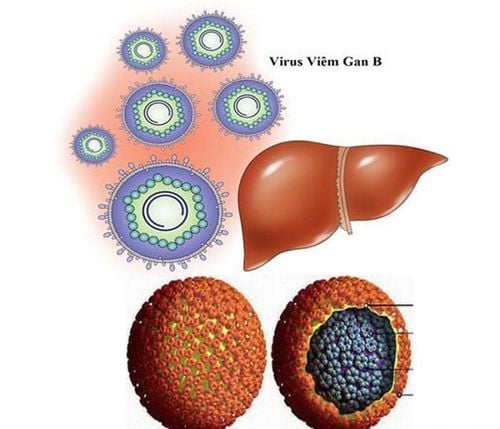
Hình ảnh virus gây bệnh viêm gan B siêu vi
3. Criteria for diagnosis of chronic hepatitis B
Divided into 2 groups:
Chronic hepatitis B with HBeAg (+)
HBsAg > 6 months HBV DNA > 10 to 5 copies/ml (HBV DNA: serum viral concentration). Intermittent or persistent elevation of ALT/AST Liver biopsy shows chronic hepatitis with moderate to severe necrosis Chronic hepatitis B with HBeAg (-)
HBsAg > 6 months HBV DNA > 10 to 4 copies/ml Intermittent or persistent elevation of ALT/AST Liver biopsy shows chronic hepatitis with moderate to severe necrosis. Healthy people carrying HBsAg (inactive HBsAg carrier state): long-term HBV infection but does not cause liver necrosis.
HBsAg > 6 months HBeAg (-), Anti HBe (+) HBV DNA < 10 to 4 copies/ml ALT/AST normal. Liver biopsy without significant hepatitis: mild or no necrosis
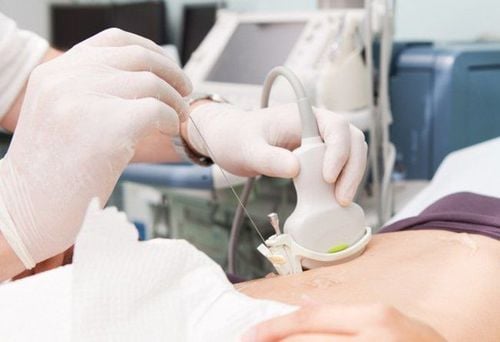
Một số trường hợp cần được chỉ định sinh thiết gan trong chẩn đoán Viêm gan siêu vi B mạn
4. Infectious routes of Hepatitis B
Hepatitis B has two routes of transmission:
vertical contamination (horizontal contamination). 4.1 Longitudinal route of transmission Mother-to-child transmission route: This is the most important type of infection, common in Asian countries. In pregnant women, infection occurs during the perinatal period (from the 28th week of pregnancy to the 7th day postpartum).
The degree of infection depends on the HBV DNA level. + The rate of infection to the child is 0% if: maternal HBV DNA < 10 to 5 copies/ml
+ The infection rate to the child is 50% if: maternal HBV DNA is from 10 to 9 to 10 copies/ml ml .
+ The rate of infection to the baby is 28-39% if the mother's HBV DNA is 10 to 9 copies/ml or more (even though the baby has been vaccinated against HBV right after birth)
The degree of infection depends on the situation. maternal HBeAg status in the third trimester of pregnancy. + Mother has HBeAg (+), newborn has a 95% risk of infection if not receiving immunoprophylaxis.
+ Mother has HBeAg (-), the rate of infection to the baby is 32% (common in cases of mothers with chronic hepatitis B having HBeAg (-)).

Sự lây nhiễm viêm gan siêu vi B có thể xảy ra trong quá trình sinh đẻ
4.2 Horizontal Contagion Contaminated by blood, blood products is the most important route of infection, as there is always a high level of hepatitis B virus. Sexual transmission, through sharing needles (injecting drugs, acupuncture, tattoos, body piercings such as ear piercings, nostrils...) with people infected with hepatitis B virus is a common type of infection. most met.
Hepatitis B virus is found in vaginal fluids, semen with concentrations more than 100 times lower than in plasma, Other fluids such as peritoneal, pleural, cerebrospinal fluid ... also contain inflammatory virus. liver B. Milk, saliva, sweat, urine, feces, and bile also contain hepatitis B virus but in very low concentrations, so the possibility of infection through these fluids is also very low. Sharing toothbrushes and razors that are contaminated with the blood or fluids of an infected person can also become infected with the hepatitis B virus. The hepatitis B virus is not transmitted through food, water, or casual contact.
.
5. Some important laboratory indicators in hepatitis B
Reading and understanding the indicators in the quantitative hepatitis B virus test is essential. Among the test indicators, patients need to pay special attention to the following:
HBV-DNA : The complete viral part (including the nucleus and envelope) of the hepatitis B virus. The HBV-DNA test shows the number of hepatitis B viruses. The amount of hepatitis B virus in the blood. HBV-DNA reflects the replication and replication of the virus in the patient's body. HBsAg is the surface antigen of the HBV virus. To conclude whether or not you are infected with the hepatitis B virus depends on the HBsAg test. If HBsAg (+) is infected with hepatitis B virus, if HBsAg (-) is not infected with hepatitis B virus. HBeAg : is the endogenous antigen of hepatitis B virus. The presence of HBeAg (+) indicates the presence of hepatitis B virus. indicates that you have a high concentration of the virus in your blood and are very contagious. If HBeAg is negative (HBeAg (-)), then the virus level in the blood is low or the virus is in the dormant stage, not replicating and the risk of infecting others is low. However, there are patients infected with hepatitis B virus carrying Precor mutation, these are chronic hepatitis B patients with HBeAg (-) Liver enzymes ALT, AST: indicate the extent of liver damage caused by the virus. go out.
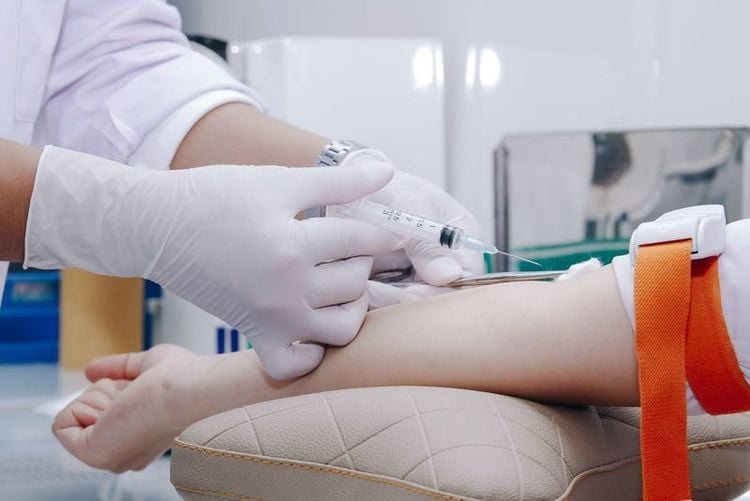
Máu ngoại vi được sử dụng làm xét nghiệm chẩn đoán viêm gan siêu vi B
6. Sample collection, storage and factors affecting HBV PCR test results (PCR measures hepatitis B virus load)
6.1. How to collect Samples Collect patient samples in the morning before eating Plasma/serum with EDTA-anticoagulant capacity: 4ml 6.2. Sample preservation Conduct specimen collection from plasma/serum. Centrifuge and store samples for 6 hours from the time of specimen collection at room temperature. Analysis should be carried out immediately after the specimen is obtained because long-term storage can lead to errors in PCR results.
In case it is not possible to analyze and test immediately, more than 6 hours after the time of sampling. Transfer the plasma/serum to a sterile stoppered tube and store and store the sample in the freezer. If the specimen collection tube contains anticoagulant heparin, it can cause the specimen to be inhibited with the PCR reaction.
6.3. Factors affecting the results of the HBV PCR test Based on the results of the PCR analysis of the hepatitis B virus load, the doctor will have a basis to determine which cases do not need to use drugs or need to use drugs. virus inhibition. For pregnant women, the obstetrician-gynecologist will have a basis to easily estimate the infection from mother to child to have an appropriate prevention plan.
However, the method of measuring the hepatitis B virus load through the HBV-DNA PCR technique may still have errors in the conditions of sampling, sample storage and incorrect testing procedures. This leads to doctors not having accurate results to be able to properly analyze the patient's disease.
Currently, Vinmec International General Hospital has developed a service of hepatobiliary screening, which helps detect hepatitis virus at an early stage even when there are no symptoms. The examination helps the doctor:
Assess the liver's ability to work through liver enzyme tests Assess bile function; vascular nutrition; Early screening for liver cancer; Perform tests such as Total blood cell analysis, blood clotting ability, screening for hepatitis B, C Assessment of liver and biliary status through ultrasound images and diseases that are at risk of affecting liver disease / liver disease. more severe liver disease In-depth analysis of parameters to evaluate hepatobiliary function through laboratory and subclinical tests; the risk of affecting the liver and early screening for hepatobiliary cancer. Therefore, for in-depth examination and advice, customers can register for an examination at the hospital to get instructions from qualified doctors.
Articles source references:
1. Anna SF Lok, Rafael Esteban, Peter A L Bonis. Clinical manifestations and natural history of hepatitis B virus infection. Up to date version 17.1: January 2009.
2 Lok ASF, McMahon BJ. Hepatology. 2009;50:661-662.




